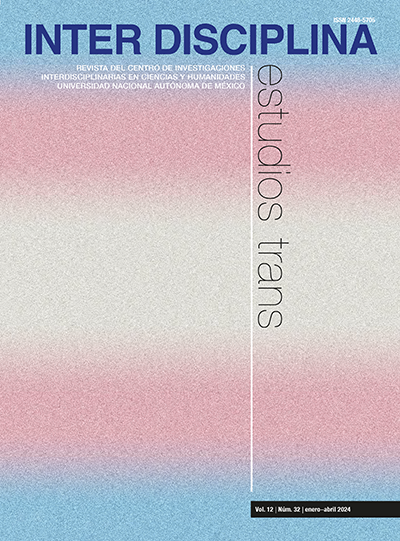La nueva normalidad o la ralentización del Antropoceno
Contenido principal del artículo
Resumen
El presente trabajo busca explorar en qué medida la nueva normalidad, antecedida de una biopolítica del confinamiento, supone una ralentización global de los procesos del Antropoceno. Se argumenta que el impacto de la nueva normalidad concierne no a la mera disminución del ritmo de los modos de desarrollo, sino a la creciente conciencia de los ensamblajes multiespecies. Si se considera tal visibilización a la luz de la noción de cuidado y atención, y si dicho cuidado ha permitido ver más allá del sesgo antropocentrista en lo que respecta a la conservación y restauración de los ecosistemas, entonces, es posible hacer uso de dicha atención para visibilizar a grupos humanos desprotegidos y en notoria desventaja en esta nueva normalidad.
Descargas
Detalles del artículo
Citas en Dimensions Service
Citas
Baleé, William y Erickson, Clark. 2006. Time, complexity and historical ecology. En William Baleé y Clark Erickson (eds.), Time and complexity in historical ecology. Columbia University Press, 1-20.
Castells, Manuel. 1999. La era de la información. Economía, sociedad y cultura. La sociedad red. Madrid: Alianza.
Constanza, Robert, Lisa Graumlich y William Steffen (eds.). 2007. Sustainability or collapse? An integrated history and future of people on Earth. Dahlem Workshop Reports.
Crutzen, Paul. 2002. Geology of mankind. Nature, 415(6867): 23.
Denevan, William. 2006. Una perspectiva histórica sobre el descubrimiento de campos elevados (camellones) prehispánicos en Sud América. En Francisco Valdés (ed.), Agricultura ancestral. Camellones y albarradas. Contexto social, usos y retos del pasado y presente, 17-24.
Durand, Leticia. 2020. Covid-19 y el retorno de los animales. Apuntes desde la etnografía multiespecie. México: CRIM, UNAM.
Ellis, Erle. 2018. Anthropocene. A very short introduction. Oxford: Oxford University Press.
Fujigaki, Alejandro. 2020. Caminos rarámuri para sostener o acabar con el mundo. Teoría etnográfica, cambio climático y Antropoceno. MANA, 26(1): 1-35.
Gan, Elaine, Ana Tsing, Heather Swanson y Niels Bubandt. 2017. Introduction: haunted landscapes of the Anthropocene. En Anna Tsing, Heather Swanson, Elain Gan y Nils Bubandt (eds.), Arts of living on a damaged planet. Ghosts of the Anthropocene. Minnesota University Press.
Hann, Chris. 2017. Anthropology and Anthropocene: micro and macroperspectives. European Journal of Social Theory, 20(1): 186-193.
Hartigan, John. 2014. Multispecies vs Anthropocene. http://somatosphere.net/2014/multispecies-vs-anthropocene.html/.
Hartigan, John. 2017. Care of the species: races of corn and the science of plantbiodiversity. University of Minnesota Press.
Hinchliffe, Steve, Nick Bingham, John Allen y Simon Carter. 2016. Pathological lives. Disease, space and biopolitics. Willey-Blackwell.
Laland Kevin y Boogert Neeltje. 2008. Niche construction, co evolution and biodiversity. Ecological Economics, 69: 731-736.
Laland Kevin y Michael O´Brien. 2010. Niche construction theory and archaeology. Journal of Archaeological Method and Theory, 17: 303-322. Springer.
Loera, Juan y Martínez, Nicolás. 2021. Aproximaciones a las afectaciones culturales y de salud por Covid-19 en la Sierra Tarahumara. Cuicuilco Revista de Ciencias Antropológicas, 28(81): 97-123.
Neves, Eduardo. 2008. Ecology, ceramic chronology and distribution, long-term history and political change in the Amazonian Floodplain. En H. Silverman y H. Isbell (eds.), Handbook of South American archaeology, 359-379.
NU.CEPAL. 2021. La autonomía económica de las mujeres en la recuperación sostenible y con igualdad. Informe Especial 9 COVID-19. CEPAL.
Oyama, Susan, Paul Griffiths y Russell Gray. 2001. Cycles of contingency. Developmental systems and evolution. MIT Press.
Reichholf, Josef. 2008. La invención de la agricultura. Madrid: Crítica.
Schaan, Denis. 2013. Sacred geographies of Ancient Amazonia. Historical ecology of social complexity. EUA: Left Coast.
Schultz, Emily. 2015. La construcción de nichos y el estudio de los cambios de cultura en antropología: desafíos y perspectivas. Interdisciplina, 3(5): 131-159.
Segata Jean, Grisotti Marcia y Porto Rozeli. 2022. COVID-19 in Brazil. Vibrant Virtual Brazilian Anthropology, 19: 1-7.
Smith, Bruce y Melinda Zeder. 2013. The onset of the Anthropocene. Anthropocene, Special Issue, 8: 13.
Steffen, Will, Wendy Broadgate, Lisa Deutsch, Owen Gaffney y Cornelia Ludwig. 2015. The trajectory of the Anthropocene: the great acceleration. The Anthropocene Review, 2(1): 81-98.
Steffen, W., Johan Rockstrom, Katherine Richardson Timothy Lenton, Carl Folke, Diana Liverman, Colin Summerhayes, Anthony Barnosky, Sarah Cornell, Michel Crucifix, Jonathan Donges, Ingo Fetzer, Steven Lade, Marten Scheffer, Ricarda Winkelmann y Hans Schellnhuber. 2018. The trajectory of the Earth system in the Anthropocene. PNAS.
Stengers, Isabel. 2014. La propuesta cosmopolítica. Revista Pléyade, 14: 17-4.
Taddei, Renzo, Shiratori Karen y Bulamah Rodrigo. 2022. Decolonizing the Anthropocene. En Hilary Callan and Simon Coleman (eds.), The International Encyclopedia of Anthropology. John Wiley Ltd. https://doi.org/10.1002/9781118924396.wbiea2519.
Tomasello, Michael, Ann Kruger y Hilary Ratner. 1993. Cultural learning. Behavioral and Brain Sciences, 16: 495-552.
Van Dooren, Tom, Eben Kirskey y Ursula Münster. 2016. Multiespecies studies. Cultivating arts of attentiveness. Environmental Humanities, 8: 1-23.

Esta obra está bajo una Licencia Creative Commons Atribución-NoComercial-SinDerivar 4.0 Internacional.





